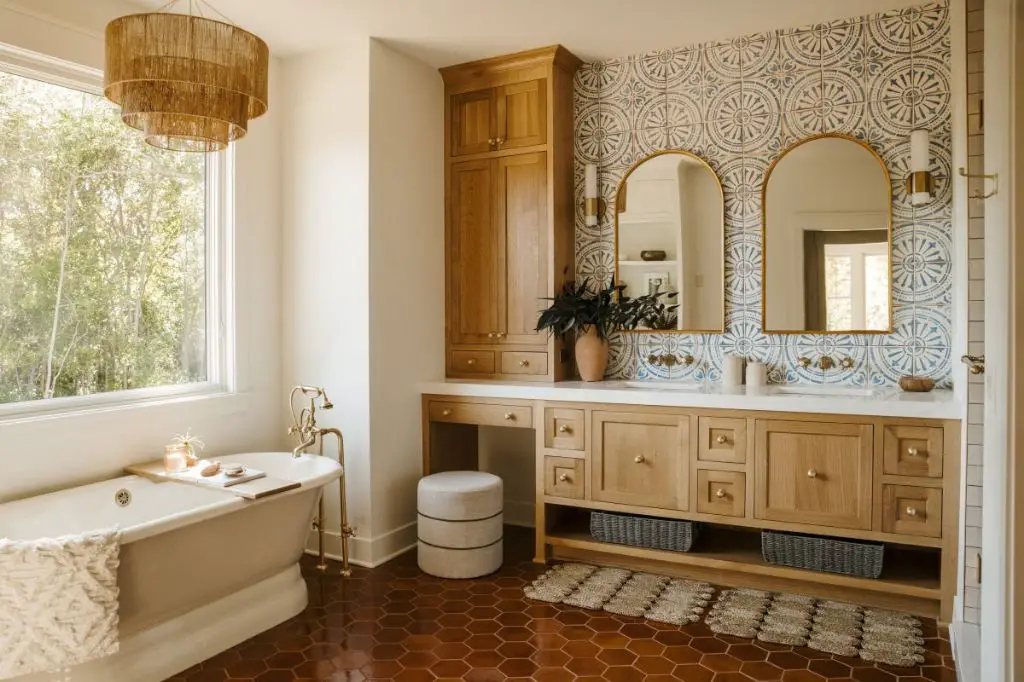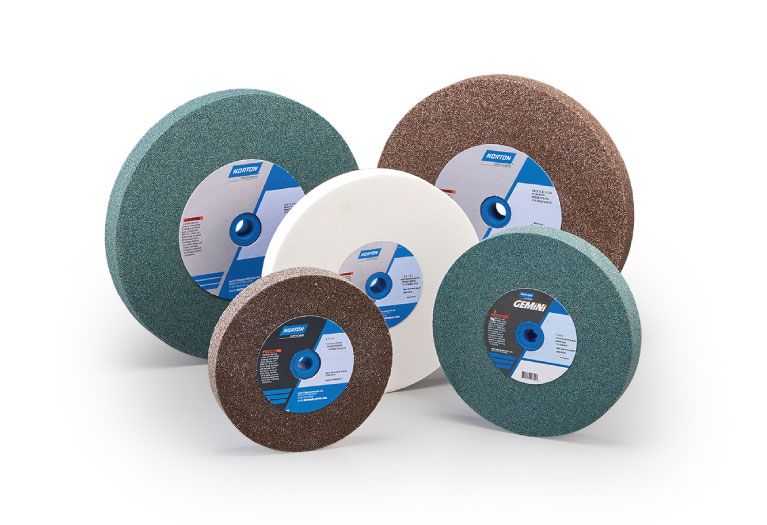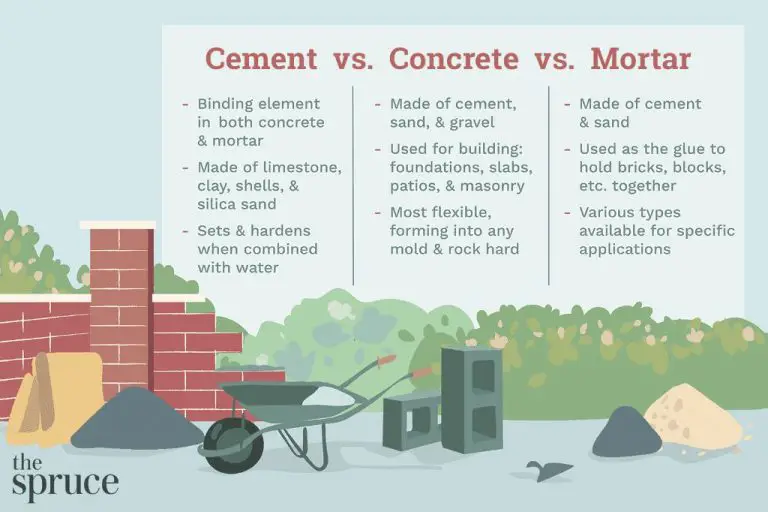Are Clay Floor Tiles Good?
Clay floor tiles, also known as terracotta tiles, are a type of ceramic tile made from natural clay and baked at high temperatures. Terracotta tiles have been used as flooring for centuries due to their durability, aesthetics, and eco-friendly nature.
Terracotta floor tiles offer some great benefits but also have some potential downsides to consider. On the pro side, clay tiles have a timeless, rustic appearance that brings warmth and natural texture to any space. They are extremely durable and can last a lifetime with proper care. Clay tiles are also naturally slip-resistant. In addition, terracotta is an environmentally sustainable material manufactured from abundant natural clay without chemical additives.
However, clay tiles tend to be porous and require more intensive sealing and maintenance compared to porcelain or stone. They can also stain more easily from spills. Glazed terracotta provides an impermeable surface but loses some of the natural terracotta charm. Clay tiles may chip or crack if heavy objects are dropped on them. Overall, terracotta floor tiles offer unique benefits but require some maintenance to keep them looking beautiful.
History of Clay Tiles
Clay floor tiles have a long history dating back thousands of years. According to Traditional Building, mosaic tiles initially began as tiny cubes of colored stone called tesserae arranged by hand into geometric patterns or images during ancient Greek and Roman times. Terracotta tiles have been found in ancient Egyptian palaces and tombs from as early as 4,000 B.C. (https://www.traditionalbuilding.com/product-report/ceramic-tile-history)
Why Tile notes that the first ceramic tiles originated in China around 5,000 years ago. Glazed ceramic tiles were first developed in ancient Mesopotamia and Egypt around 4,500 years ago and spread to ancient Greece and Rome. The Romans introduced early mosaic flooring by arranging small rectangular clay tiles called opus signinum. Terracotta tiles were widely used in ancient Rome and were an early form of ceramic tile made from natural red clay. (https://whytile.com/tile-history/ceramic-tile-origins/)
According to Marc Maison, terracotta tiles were a popular flooring used throughout the Mediterranean region during ancient Roman times. The baked red clay tiles continued spreading across Europe during the Middle Ages into the Renaissance period. Advances in the 18th and 19th centuries allowed for mass production and new manufacturing techniques for clay tiles. (https://www.marcmaison.com/architectural-antiques-resources/terracotta_floor)
Benefits of Clay Tiles
Clay tiles offer several benefits that make them a popular flooring choice. As a natural material made from clay and other earth materials, clay tiles are extremely durable and long-lasting. According to the source Advantages and the Best Guide for Terracotta Floor Tiles, if installed properly, clay tiles can last for many years. Their durability comes from the baking process which hardens and strengthens the tiles.
In addition to durability, clay tiles are available in a wide variety of styles and colors. From classic terra-cotta to glazed porcelain looks, clay tiles can achieve rustic, vintage, or modern aesthetics. Their versatility and ability to complement any decor is another major benefit cited by 4 Benefits Of Terracotta Tiles.
Clay tiles also provide good thermal mass, meaning they absorb and retain heat well. This helps regulate interior temperatures and can reduce energy costs for heating and cooling a space. The natural clay material provides this useful thermal mass that adds to the functionality of clay tile floors.
Downsides of Clay Tiles
While clay tiles offer many benefits, they also have some drawbacks to consider. One of the main downsides of clay tiles is that they are very heavy. Clay is a dense, heavy material, so clay tiles will weigh more per square foot than most other types of flooring.
According to Jindal Bricks, clay tiles can weigh between 7-10 pounds per square foot. This heavy weight means you need a robust floor structure underneath that can support the load of the tiles.
Additionally, clay tiles are prone to cracking if they are not installed properly. Clay shrinks as it dries, so the tiles can crack if the subfloor is not perfectly level or if expansion joints are not used. Cracking can also occur over time due to settling of the subfloor or foundation if the installation was not done correctly.
Finally, clay tiles tend to be one of the more expensive flooring options. Both the tiles themselves and the installation costs more compared to materials like vinyl, laminate, or engineered hardwood. The heavy weight of the tiles also adds to installation costs. According to Design Swan, handmade clay tiles can cost $10-15 per square foot installed.
Maintenance
Proper maintenance is crucial for keeping clay tiles looking their best. Two key aspects of maintenance are sealing and regular cleaning.
Clay tiles are porous and need to be sealed to prevent stains and moisture damage. Sealing creates a protective barrier on the surface. It’s recommended to seal tiles upon installation and re-seal every 1-2 years. Popular sealants for clay tiles include Miracle 511 Impregnator and Aqua Mix Sealer’s Choice Gold. Always follow manufacturer instructions for application and drying time.

For cleaning, a mild pH-neutral cleaner like Miracle Sealants Tile & Stone Cleaner works well for regular maintenance. Mix the cleaner with water and use a sponge or mop. Rinse thoroughly after cleaning. For tough stains, a heavy duty grout cleaner like Aqua Mix Heavy-Duty Tile & Grout Cleaner can be used occasionally. Avoid acidic cleaners which can damage the tiles.1
It’s best to clean spills immediately to prevent staining. Allow the tiles to completely dry after cleaning. Proper sealing and regular gentle cleaning will help maintain the look and durability of clay floor tiles.
Installation
Proper subfloor preparation is crucial for a successful clay tile installation. The subfloor must be flat, clean, dry and structurally sound. High spots should be ground down and low spots filled with a self-leveling compound. The type of mortar you use depends on the subfloor material. For concrete subfloors, a thinset mortar is typically used. Follow the thinset manufacturer’s instructions, and use a notched trowel to spread it evenly over the subfloor. The notches create grooves for the tile to adhere to (https://blog.livingterracotta.com/2013/05/31/how-to-lay-terracotta-tiles-on-an-interior-or-exterior-concrete-floor/).
For wood or OSB subfloors, a mortar bed is recommended. The mortar bed acts as an uncoupling layer which prevents cracks from telegraphing up through the tile. Mix the mortar according to specifications and trowel it down in a layer 1-2 inches thick. Allow to cure completely before installing the tiles. Use spacers between tiles for consistent grout lines.
For grouting, choose an unsanded grout for joints 1/8 inch or smaller, or a sanded grout for wider joints. Make sure the grout is suitable for the tile material. A grout release can help prevent staining. Apply grout with a rubber float, forcing it into the joints. Wipe diagonally across tiles with a damp sponge to remove excess. Allow to dry completely before sealing or using the floor (https://growhousegrow.com/clay-tile-installation-guidelines/).
Cost Comparison
Clay tiles are generally more affordable than other types of natural stone tiles like marble or granite. According to Stone Tile Depot, terracotta tiles range from $2-4 per square foot. In comparison, natural stone tiles like marble or granite can cost $5-15 per square foot.
However, clay tiles are generally more expensive than ceramic or porcelain tiles. According to This Old House, terracotta tiles range from $7-14 per square foot, while ceramic tiles range from $1-5 per square foot. The higher cost for clay tiles comes from the natural raw materials and production process involved.
The cost difference depends on the type and grade of the tiles. While basic ceramic tiles are cheaper, high-end porcelain tiles with custom designs can be comparable in price to mid-range terracotta tiles. Overall clay tiles occupy an affordable mid-range price point between economy ceramic and premium natural stone tiles.
Best Uses for Clay Tiles
Clay tiles are versatile and can be used in a variety of spaces, but some of the best uses are in kitchens, bathrooms, and entryways.
Kitchens
Clay tiles are an excellent choice for kitchen floors. They are naturally stain and water resistant, making them ideal for spills and messes common in kitchens. The natural colors and textures of clay tiles also provide a warm, inviting look in kitchen spaces. Some creative ways to use clay tiles in kitchens include creating patterns or designs with differently shaped tiles, or using border tiles along the edges of the floor.
Bathrooms
In bathrooms, clay tiles bring durability and style. With resistance to moisture and mildew, terracotta tiles stand up well to the damp conditions found in bathrooms. From flooring to accents on walls or in showers, clay tiles add texture and earthy hues to bath spaces. Interesting applications in bathrooms include creating mosaics or murals with handmade clay tiles, or using recycled tiles for a rustic look.
Entryways
The natural ruggedness and durability of terracotta tiles make them ideal for entryways that see a lot of foot traffic and outdoor elements. The slip-resistant qualities help prevent falls, while the style provides visual interest. From classic patterns to creative designs, clay tiles in entryways make a strong first impression. Complementary accents like mats or potted plants can enhance the look.
Styles and Design Options
Terracotta tiles come in a wide variety of styles and design options to fit any aesthetic. Here are some of the most popular options:
Terracotta – These are the iconic orange-red clay tiles that bring warmth and natural elegance to any space. The red tone comes from the high iron content in the clay. Terracotta tiles can be left natural or sealed for a glossier look.
Decorative Patterns – Many terracotta tiles feature decorative patterns like Moroccan motifs or geometric shapes. These patterns add visual interest to floors and walls. Some tiles incorporate animals, florals, and other ornate designs into the mold.
Glazed vs Unglazed – Glazed terracotta tiles have a shiny, glass-like coating that makes the surface waterproof and easier to clean. Unglazed tiles showcase the natural texture and absorbency of the clay. Glazes come in endless colors from bold primaries to pastels.
According to Profloor Tips, one popular trend is mixing terracotta tiles in different shapes like hexagons with classic square tiles. Large format tiles are also on the rise for a seamless look. Whether you want an Old World Spanish villa or modern minimalism, terracotta tiles can achieve the aesthetic.
Conclusion
In summary, clay floor tiles have some notable benefits but also some potential downsides to consider. On the plus side, clay tiles are extremely durable, long-lasting, and available in many beautiful, natural colors and patterns. They also stay cool underfoot and are more environmentally friendly than many alternatives. However, clay tiles can be quite heavy, prone to cracking, and labor-intensive to install. They also require sealing to prevent staining.
For many homeowners, the pros of clay tiles outweigh the cons. Clay tiles add timeless beauty and style to any space. They hold up well to heavy foot traffic and last for decades with proper care. If you don’t mind the higher upfront cost and maintenance requirements, clay tiles make an excellent choice for entryways, kitchens, baths, and other high-use areas of the home.
Overall, clay floor tiles can be a good option for the right homeowner. Consider your lifestyle, budget, and decor goals carefully before deciding if they are the best fit for your space.






